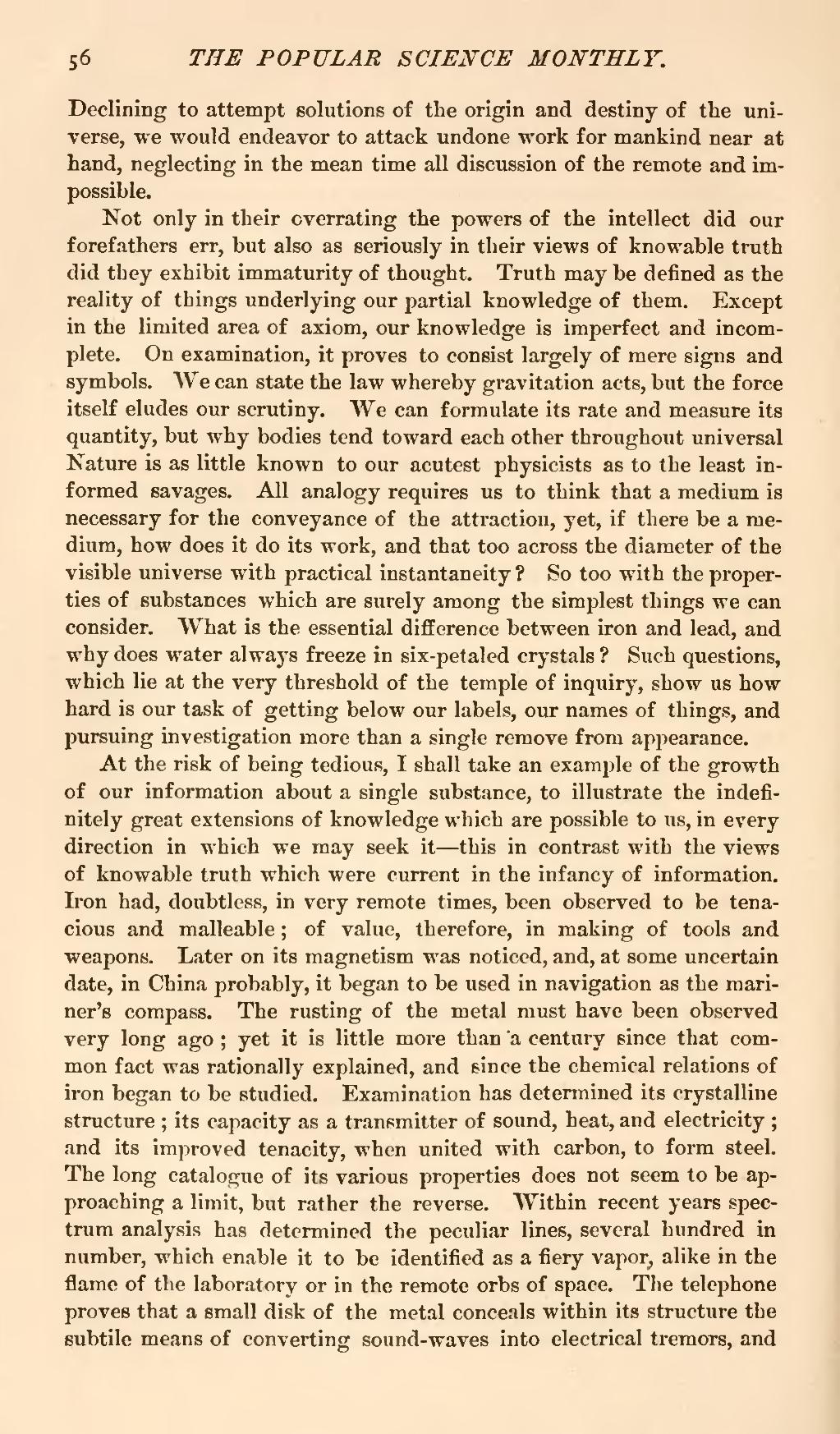Declining to attempt solutions of the origin and destiny of the universe, we would endeavor to attack undone work for mankind near at hand, neglecting in the mean time all discussion of the remote and impossible.
Not only in their overrating the powers of the intellect did our forefathers err, but also as seriously in their views of knowable truth did they exhibit immaturity of thought. Truth may be defined as the reality of things underlying our partial knowledge of them. Except in the limited area of axiom, our knowledge is imperfect and incomplete. On examination, it proves to consist largely of mere signs and symbols. We can state the law whereby gravitation acts, but the force itself eludes our scrutiny. We can formulate its rate and measure its quantity, but why bodies tend toward each other throughout universal Nature is as little known to our acutest physicists as to the least informed savages. All analogy requires us to think that a medium is necessary for the conveyance of the attraction, yet, if there be a medium, how does it do its work, and that too across the diameter of the visible universe with practical instantaneity? So too with the properties of substances which are surely among the simplest things we can consider. What is the essential difference between iron and lead, and why does water always freeze in six-petaled crystals? Such questions, which lie at the very threshold of the temple of inquiry, show us how hard is our task of getting below our labels, our names of things, and pursuing investigation more than a single remove from appearance.
At the risk of being tedious, I shall take an example of the growth of our information about a single substance, to illustrate the indefinitely great extensions of knowledge which are possible to us, in every direction in which we may seek it—this in contrast with the views of knowable truth which were current in the infancy of information. Iron had, doubtless, in very remote times, been observed to be tenacious and malleable; of value, therefore, in making of tools and weapons. Later on its magnetism was noticed, and, at some uncertain date, in China probably, it began to be used in navigation as the mariner's compass. The rusting of the metal must have been observed very long ago; yet it is little more than a century since that common fact was rationally explained, and since the chemical relations of iron began to be studied. Examination has determined its crystalline structure; its capacity as a transmitter of sound, heat, and electricity; and its improved tenacity, when united with carbon, to form steel. The long catalogue of its various properties does not seem to be approaching a limit, but rather the reverse. Within recent years spectrum analysis has determined the peculiar lines, several hundred in number, which enable it to be identified as a fiery vapor, alike in the flame of the laboratory or in the remote orbs of space. The telephone proves that a small disk of the metal conceals within its structure the subtile means of converting sound-waves into electrical tremors, and
